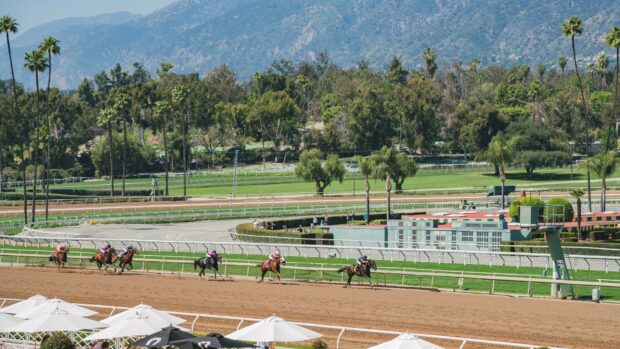What is para dressage?
Para dressage is the sport of dressage for riders with a physical impairment. Riders compete against other competitors of the same grade. Riders are allocated a grade through a classification process according to their disability. Para dressage involves showing off a horse’s training by performing a set of prescribed movements. A panel of judges then mark each movement.
“Freestyle” tests still involve set movements, however, riders choose their own floorplan and choose their own music.
Para dressage is the sole equestrian discipline contested at the Paralympic Games, which it joined as a sport in Atlanta in 1996. It joined the roster of equestrian sports governed by the International Equestrian Federation (FEI) in 2006.
The word “para” comes from the term “parallel”, referring to the Paralympics as being parallel to the Olympics.
How does para dressage work?
Before riders can compete at national or international para dressage competitions, they must go through the classification process, which includes an athlete evaluation.
Eligible riders will be allocated one of five grades, depending on their disability: grade I is for athletes whose impairment has the greatest impact on their ability to ride, while grade V is for athletes whose impairment has the least impact on their ability to ride.
What do horses and riders have to do?
Combinations perform a routine specific to the grade at which they are competing and the level at which the test is set.
Five judges seated around the arena mark each of these movements out of 10. However, some more difficult movements receive double marks.
“Collective” marks are also awarded at the end, based on the whole impression of a test, with marks for rider skill and position and the horse’s way of going. A combination’s overall score is the average of their marks presented as a percentage – the higher, the better.
What is dressage at the Paralympics?
Qualified teams of a minimum of three or a maximum of four riders compete in the team dressage medal event at the Paralympics. All team riders are also competing for medals as individuals as well. There will also be individuals competing whose nation does not hold a team spot.
Teams must have at least one rider from either grade I, II or III. Two riders from the same grade can also compete on a team together.
All competitors will ride in the individual medal event, which determines the individual medals and is the first competition the para dressage competitors will contest.
Three combinations, selected by each nation’s chef d’equipe, will then contest the team test. The three riders’ scores in the team test determine the team medals.
The last medal-winning competition of the Games for para dressage riders is the individual freestyle. The top eight combinations from each grade perform a routine to a soundtrack of their choice in the freestyle.
The rider must include certain movements but can design the programme to best suit their horse’s particular strengths. Each test is marked on its technical and artistic merits. The final score is the average of the technical and artistic marks.
Who will win in Paris?
Britain has a stellar record in the sport and has won team gold at every Paralympic Games since the discipline joined the programme. Britain’s most decorated para dressage riders include Sir Lee Pearson, Sophie Christiansen, Sophie Wells, Georgia Wilson and Natasha Baker.
Until 2018, Britain had also won team gold at every other senior para dressage championship. But the sport is growing in strength and popularity across the world and a number of nations will be challenging Britain’s dominant Paralympic record in Paris.
The Netherlands claimed team gold at both the 2023 European Championships and will be favourites. The USA – who leads the Netherlands in the latest FEI world rankings – will also be a strong contender for gold.
For individual medals, Danish grade III rider Tobias Thorning Jorgensen and his horse Jolene Hill were the top scorers at the European Championships and will be favourites for gold again. While expect Dutch riders Demi Haerkens and Sanne Voets to battle it out for grade IV gold.
How dangerous is para dressage?
Any sport that involves horses comes with a certain level of risk. While falls at para dressage competitions are rare even the best-trained horses can never be completely predictable.
They are large, powerful, living animals with their own brains and quick reactions. Therefore, riding and handling will always come with some inherent risk. However, with good training and using correct, up-to-date safety equipment, serious accidents while doing para dressage are relatively rare.






